Hyeonsu Kang
Imitation of Life: A Search Engine for Biologically Inspired Design
Dec 20, 2023Abstract:Biologically Inspired Design (BID), or Biomimicry, is a problem-solving methodology that applies analogies from nature to solve engineering challenges. For example, Speedo engineers designed swimsuits based on shark skin. Finding relevant biological solutions for real-world problems poses significant challenges, both due to the limited biological knowledge engineers and designers typically possess and to the limited BID resources. Existing BID datasets are hand-curated and small, and scaling them up requires costly human annotations. In this paper, we introduce BARcode (Biological Analogy Retriever), a search engine for automatically mining bio-inspirations from the web at scale. Using advances in natural language understanding and data programming, BARcode identifies potential inspirations for engineering challenges. Our experiments demonstrate that BARcode can retrieve inspirations that are valuable to engineers and designers tackling real-world problems, as well as recover famous historical BID examples. We release data and code; we view BARcode as a step towards addressing the challenges that have historically hindered the practical application of BID to engineering innovation.
The Semantic Reader Project: Augmenting Scholarly Documents through AI-Powered Interactive Reading Interfaces
Mar 25, 2023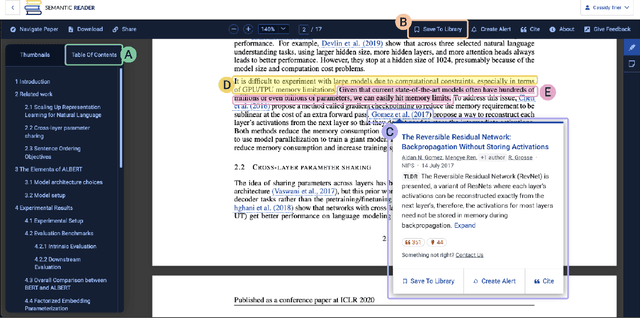
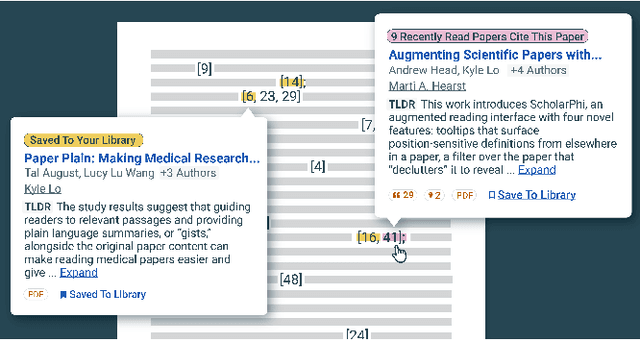
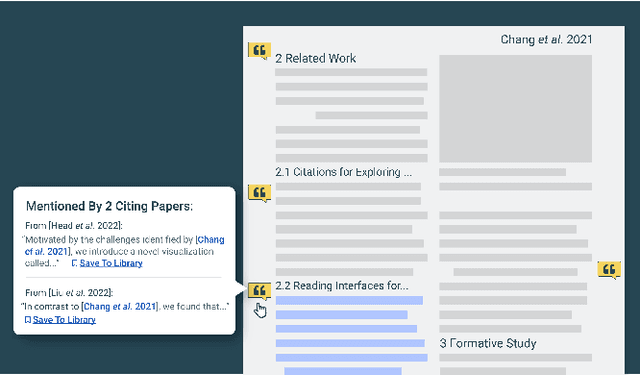
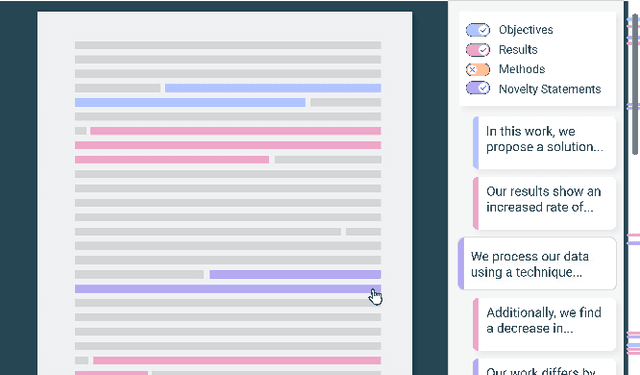
Abstract:Scholarly publications are key to the transfer of knowledge from scholars to others. However, research papers are information-dense, and as the volume of the scientific literature grows, the need for new technology to support the reading process grows. In contrast to the process of finding papers, which has been transformed by Internet technology, the experience of reading research papers has changed little in decades. The PDF format for sharing research papers is widely used due to its portability, but it has significant downsides including: static content, poor accessibility for low-vision readers, and difficulty reading on mobile devices. This paper explores the question "Can recent advances in AI and HCI power intelligent, interactive, and accessible reading interfaces -- even for legacy PDFs?" We describe the Semantic Reader Project, a collaborative effort across multiple institutions to explore automatic creation of dynamic reading interfaces for research papers. Through this project, we've developed ten research prototype interfaces and conducted usability studies with more than 300 participants and real-world users showing improved reading experiences for scholars. We've also released a production reading interface for research papers that will incorporate the best features as they mature. We structure this paper around challenges scholars and the public face when reading research papers -- Discovery, Efficiency, Comprehension, Synthesis, and Accessibility -- and present an overview of our progress and remaining open challenges.
Scaling Creative Inspiration with Fine-Grained Functional Facets of Product Ideas
Feb 19, 2021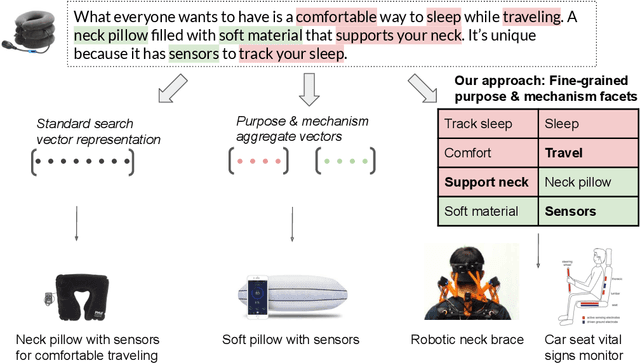
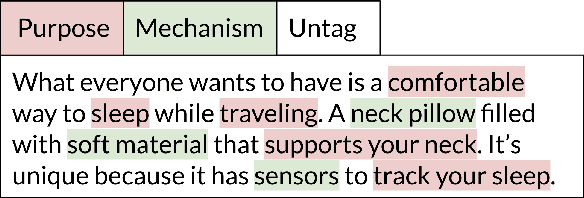

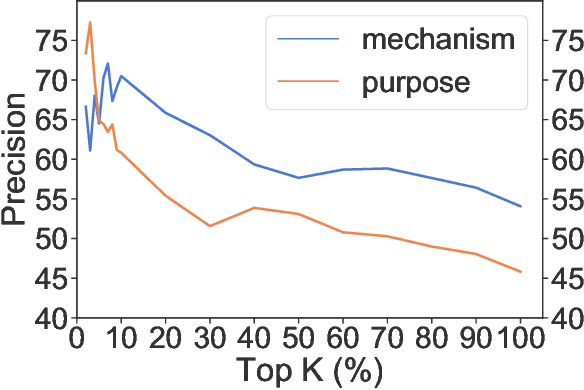
Abstract:Web-scale repositories of products, patents and scientific papers offer an opportunity for creating automated systems that scour millions of ideas and assist users in discovering inspirations and solutions. Yet the common representation of ideas is in the form of raw textual descriptions, lacking important structure that is required for supporting creative innovation. Prior work has pointed to the importance of functional structure -- capturing the mechanisms and purposes of inventions -- for allowing users to discover structural connections across ideas and creatively adapt existing technologies. However, the use of functional representations was either coarse and limited in expressivity, or dependent on curated knowledge bases with poor coverage and significant manual effort from users. To help bridge this gap and unlock the potential of large-scale idea mining, we propose a novel computational representation that automatically breaks up products into fine-grained functional facets. We train a model to extract these facets from a challenging real-world corpus of invention descriptions, and represent each product as a set of facet embeddings. We design similarity metrics that support granular matching between functional facets across ideas, and use them to build a novel functional search capability that enables expressive queries for mechanisms and purposes. We construct a graph capturing hierarchical relations between purposes and mechanisms across an entire corpus of products, and use the graph to help problem-solvers explore the design space around a focal problem and view related problem perspectives. In empirical user studies, our approach leads to a significant boost in search accuracy and in the quality of creative inspirations, outperforming strong baselines and state-of-art representations of product texts by 50-60%.
 Add to Chrome
Add to Chrome Add to Firefox
Add to Firefox Add to Edge
Add to Edge